What all those dead trees mean for the Sierra Nevada
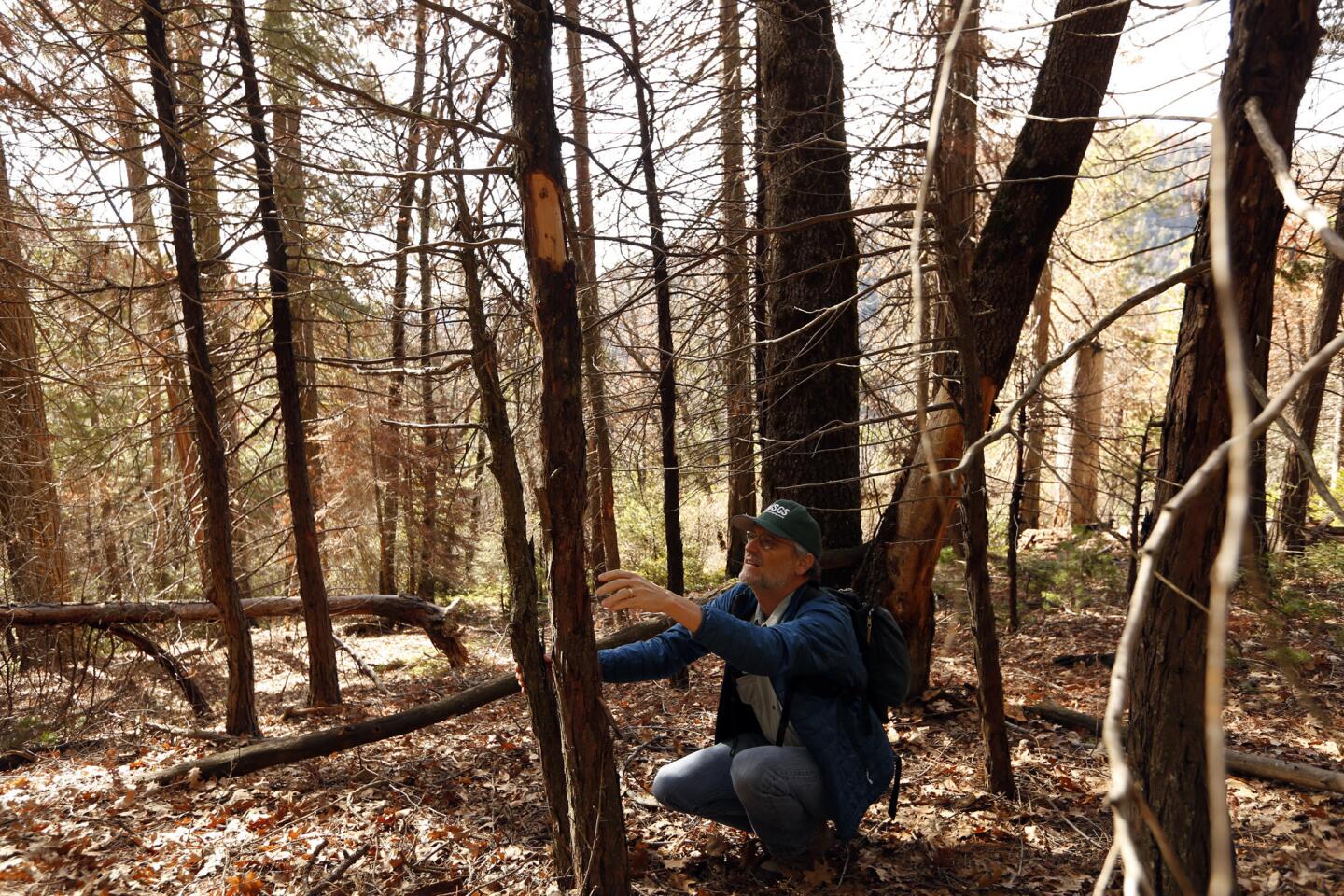
Research ecologist Nathan L. Stephenson looks over a dead incense cedar tree in a plot of land that ecologists have been studying since 1992 in the Sequoia National Park.
(Genaro Molina / Los Angeles Times)The U.S. Forest Service estimates that since 2010, more than 102 million drought-stressed and beetle-ravaged trees have died across 7.7 million acres of California forest.
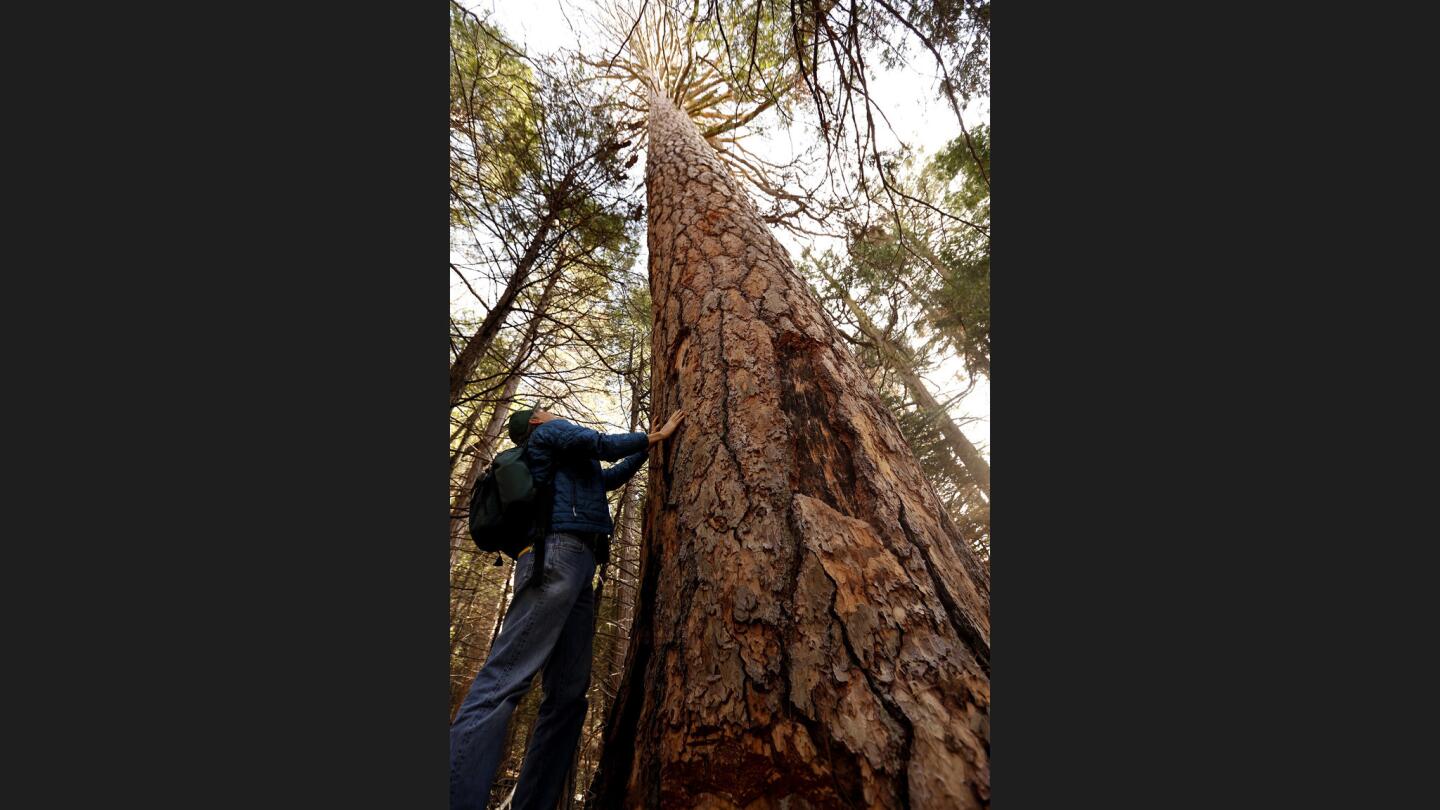
Research ecologist Nathan L. Stephenson looks over a dead ponderosa pine in Sequoia National Park.
(Genaro Molina / Los Angeles Times)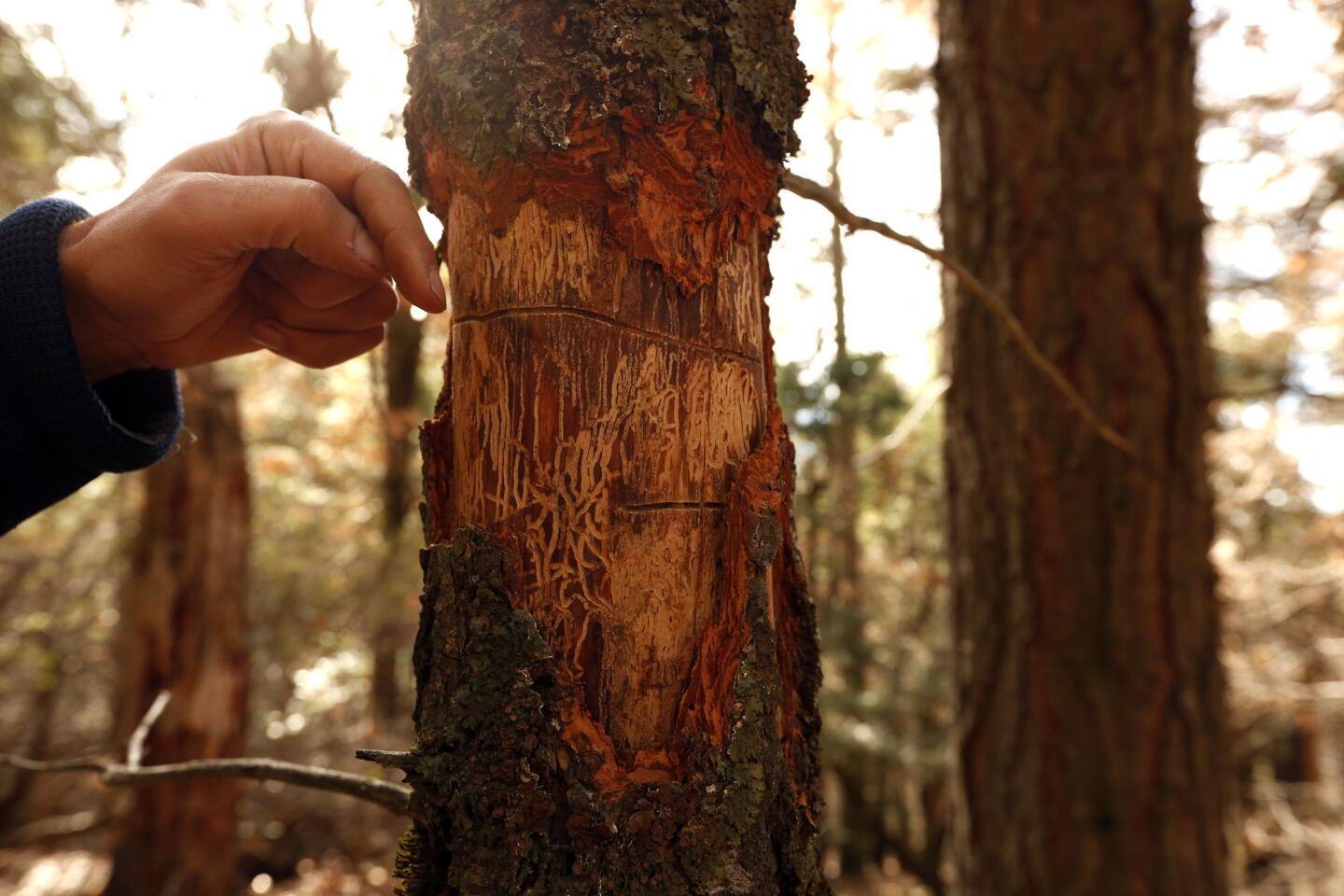
Ecologist Adrian Das inspects the paths of bark beetles that led to the death of a white fir tree in a plot of land that ecologists have been studying since 1992 in the Sequoia National Park.
(Genaro Molina / Los Angeles Times)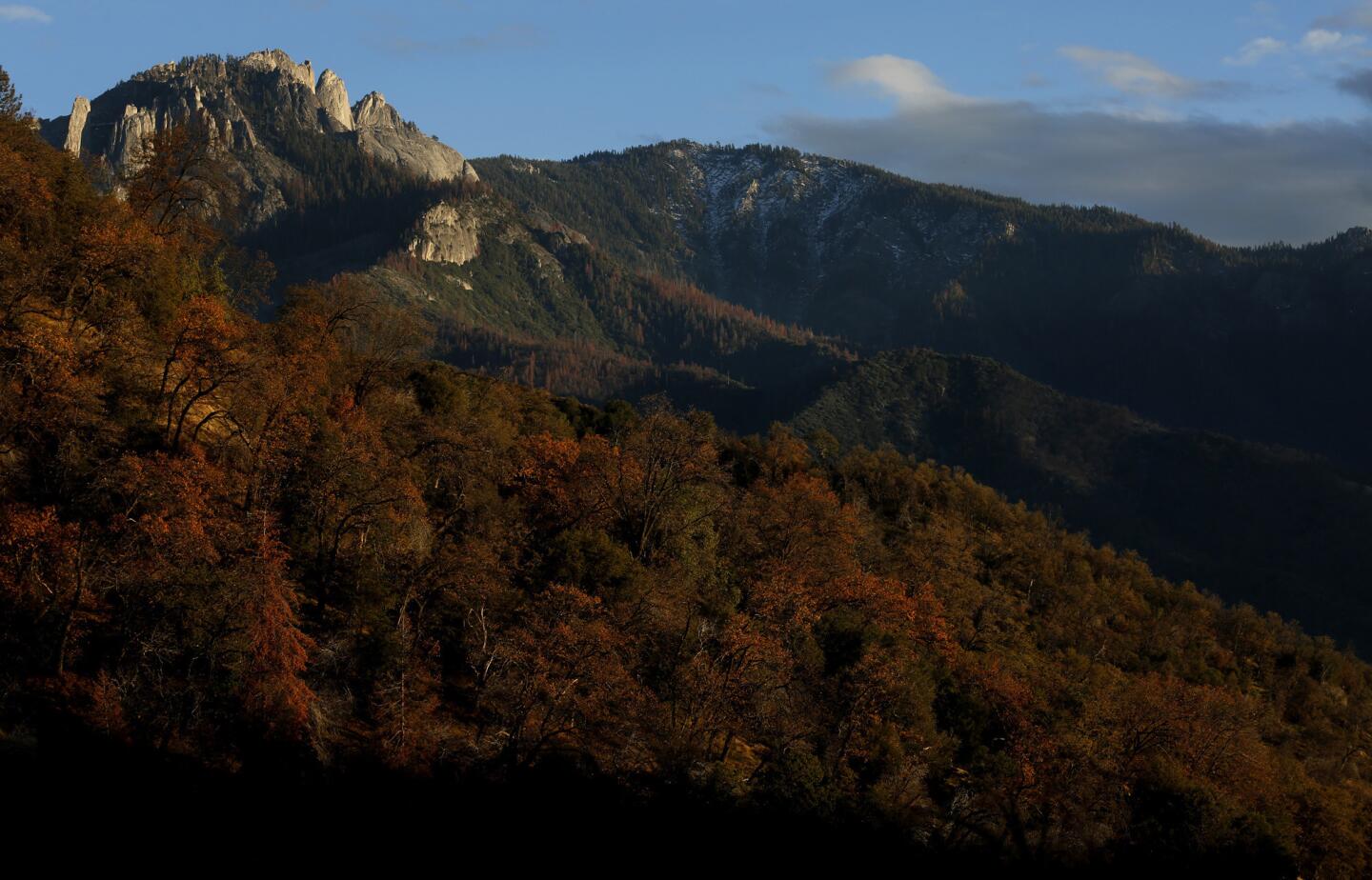
Swaths of dead conifers on the ridgeline have succumbed to drought and disease in Sequoia National Park.
(Genaro Molina / Los Angeles Times)Advertisement
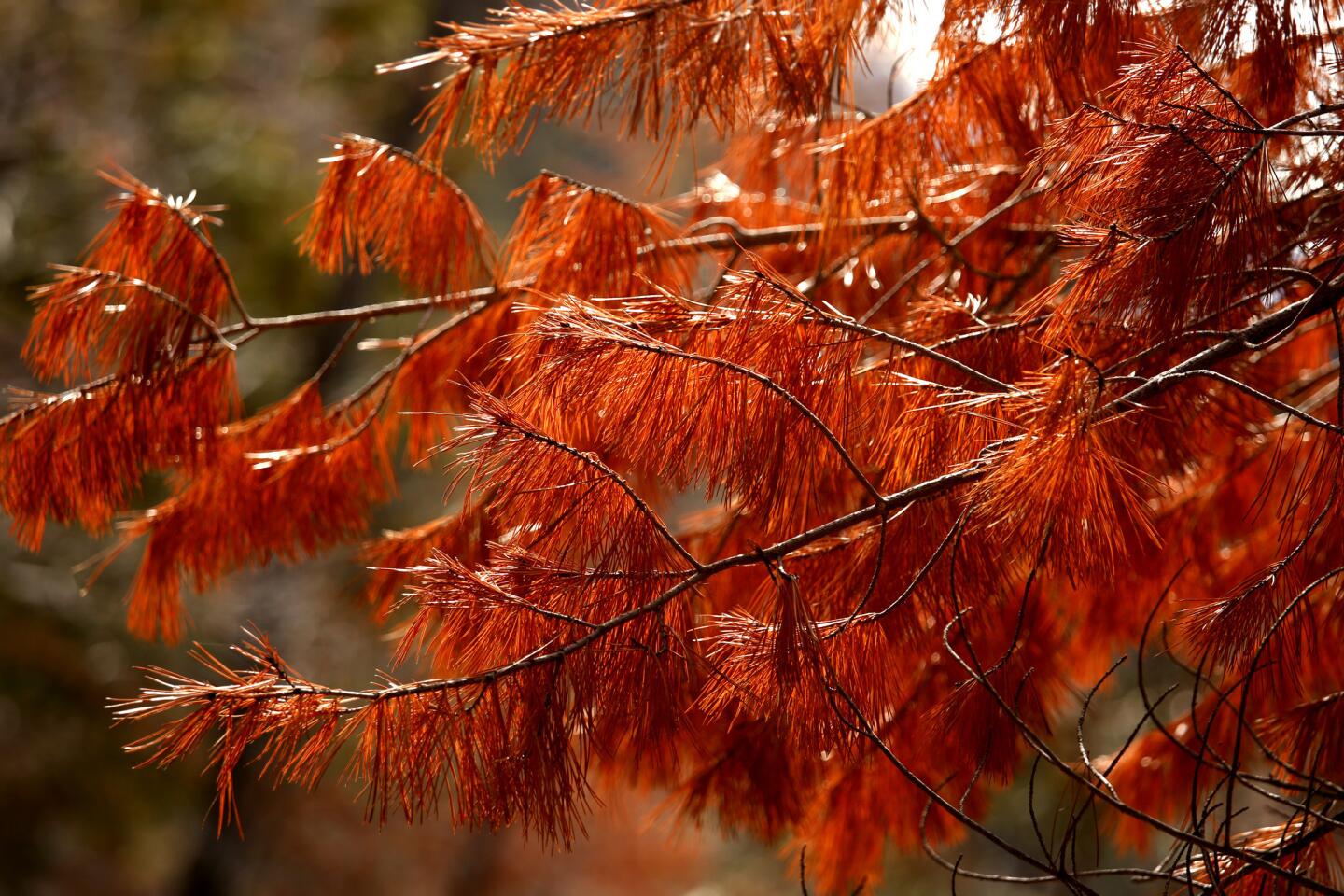
The needles of a dead sugar pine tree have gone from green to orange as the trees succumb to drought and disease in Sequoia National Park.
(Genaro Molina / Los Angeles Times)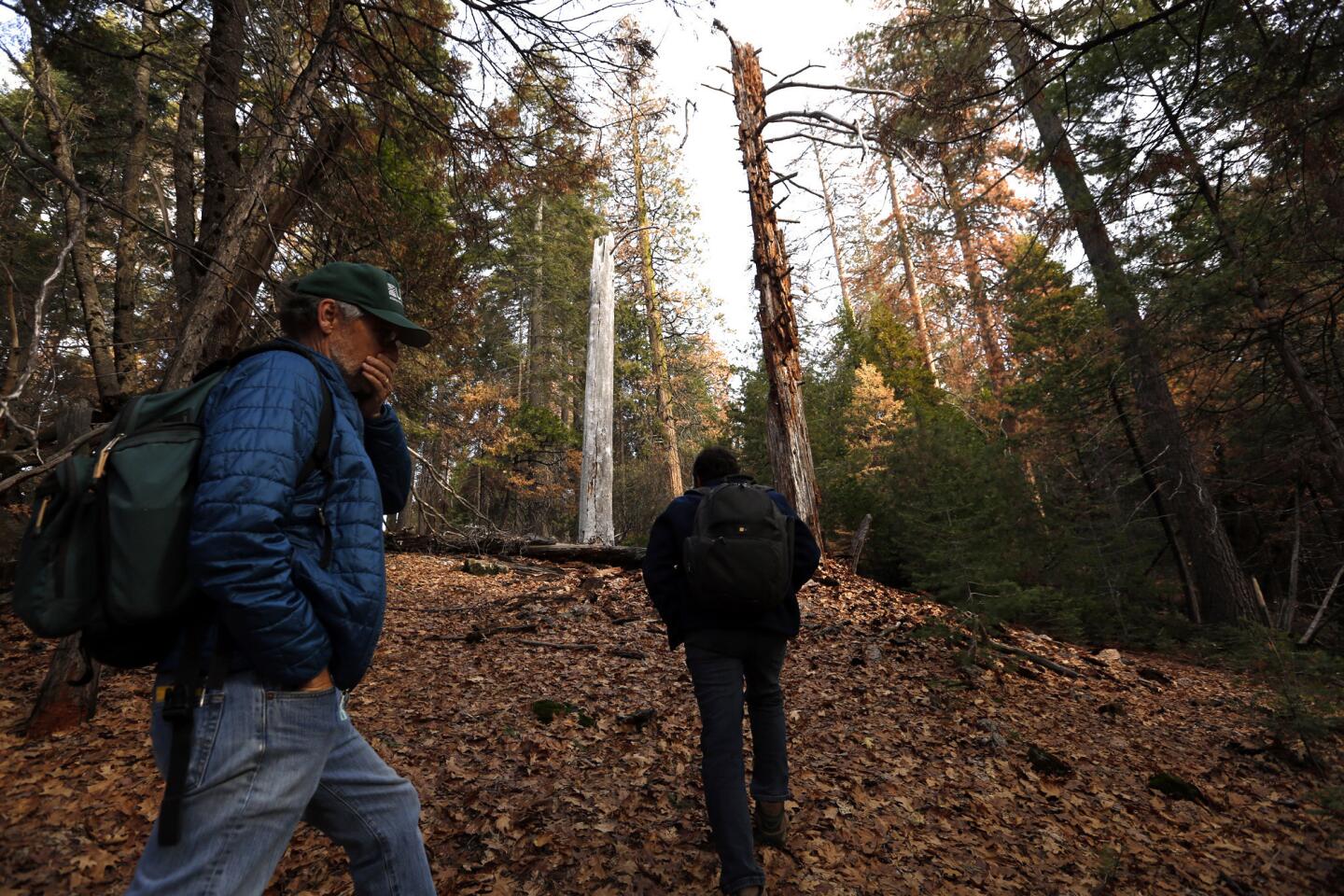
Ecologists Nathan L. Stephenson, left, and Adrian Das, both with the U.S. Geological Survey, walk past living and dead trees in a plot of land that has been studied by ecologists since 1992.
(Genaro Molina / Los Angeles Times)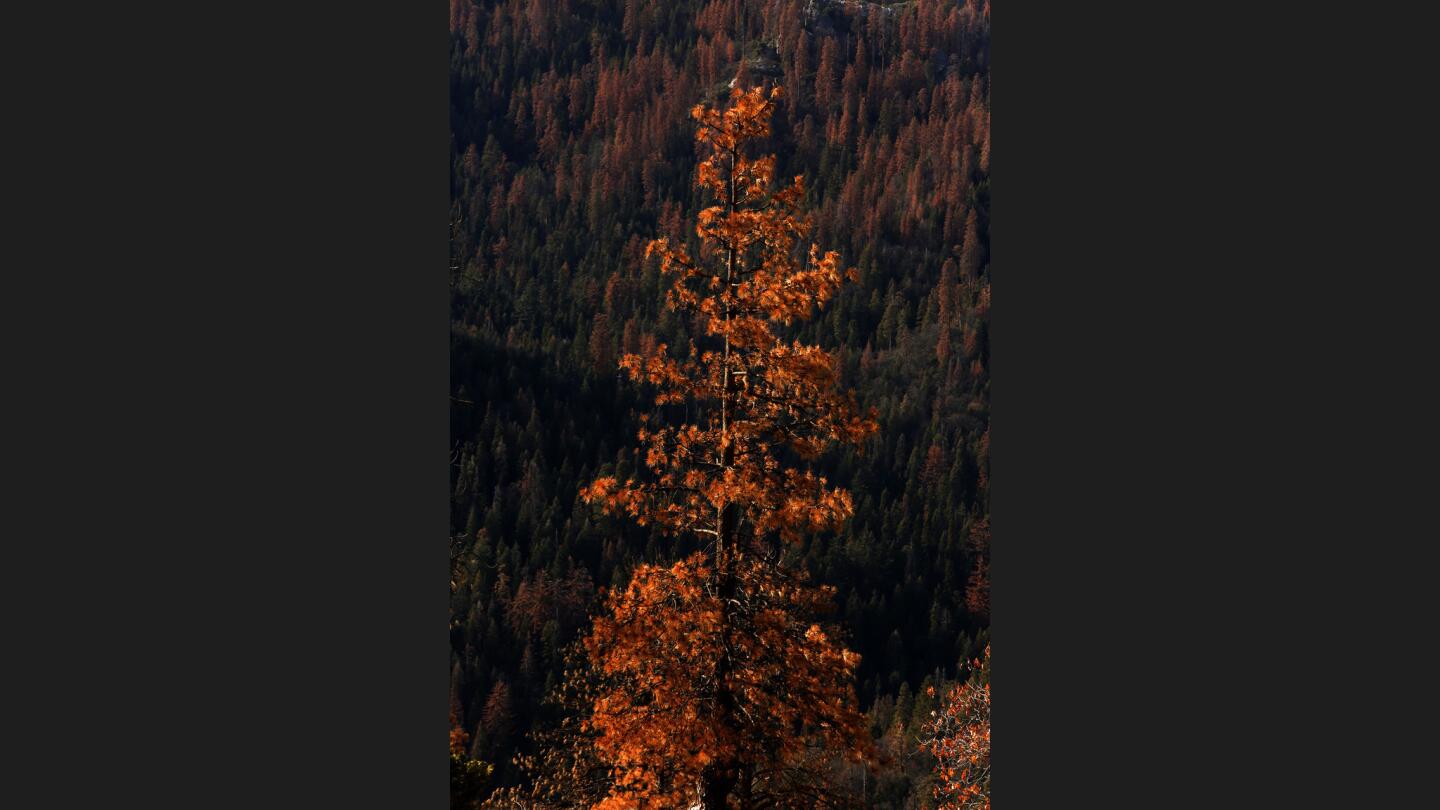
A dead pine tree stands against a backdrop of dead conifers, in orange, and living trees in Sequoia National Park.
(Genaro Molina / Los Angeles Times)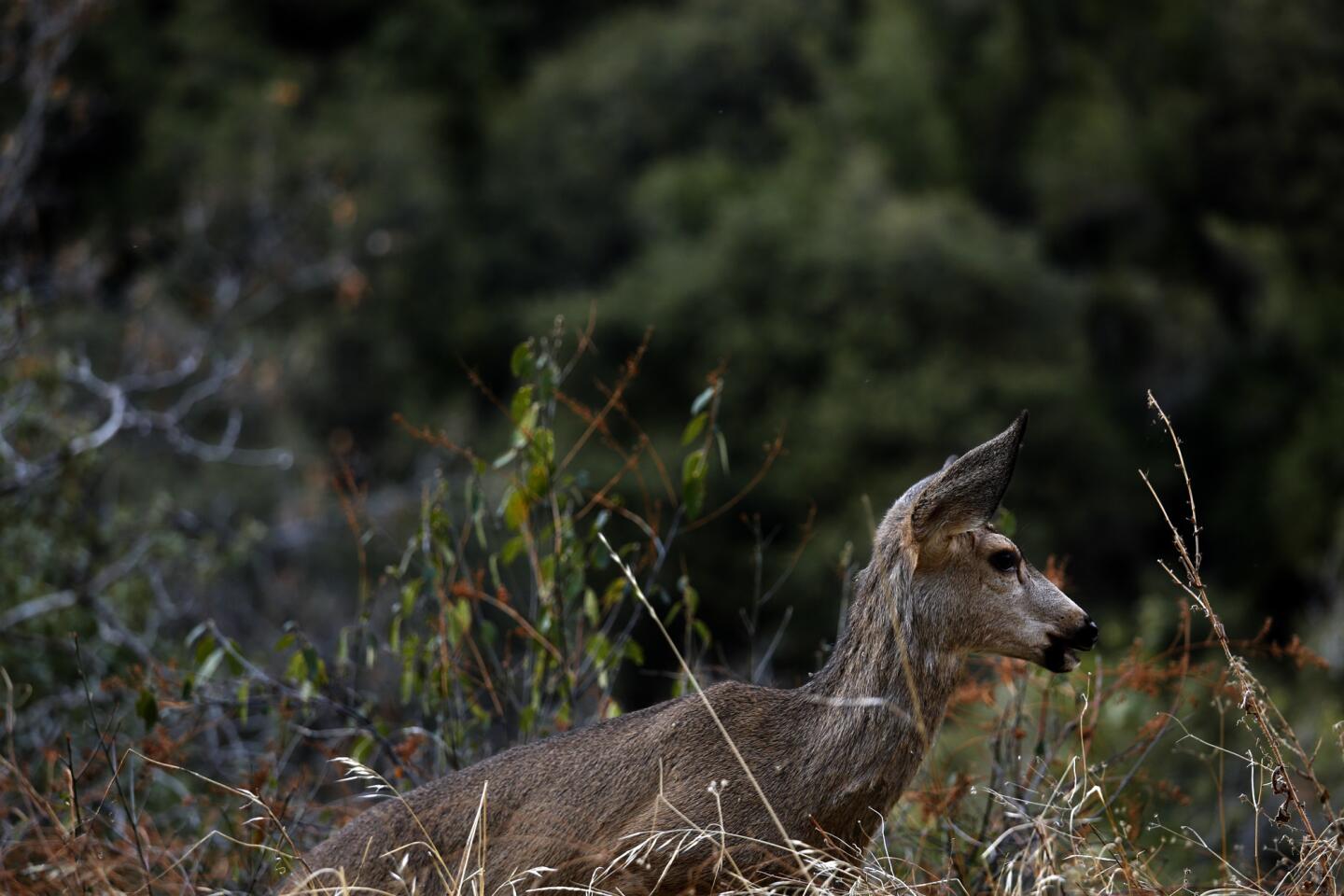
A mule deer makes its way through the Sequoia National Park.
(Genaro Molina / Los Angeles Times)Advertisement
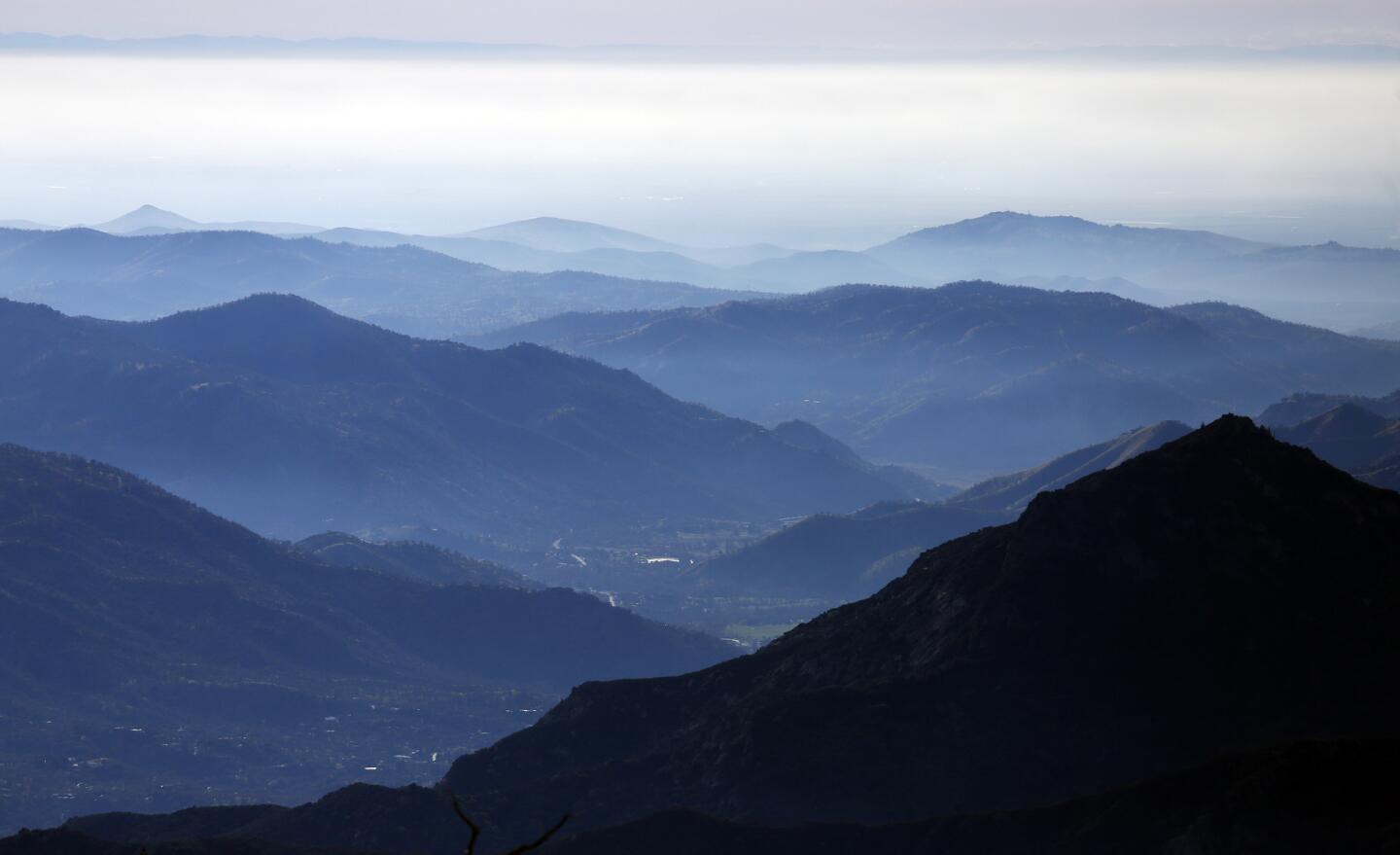
Haze settles over the Sequoia National Park and the community of Three Rivers in December.
(Genaro Molina / Los Angeles Times)






